Sonus Paradisi
Goerlitz, 2006 [Hauptwerk]
Goerlitz, 2006 [Hauptwerk]
Couldn't load pickup availability
Sonnenorgel - Görlitz, Casparini 1703, Mathis 1997-2006
The church of St. Peter and Paul in Görlitz was founded in the 13th century and it attained its present shape in 1497. The central nave is flanked by four aisles, forming a huge and highly reverberant space. In 1691 it was reconstructed after a fire, and consequently it was given a new organ, finished in 1703 by Eugenio Casparini (1623-1706) and his son.
Although the organ was very famous, Johann Sebastian Bach complained about the tough tracker touch. When playing it, he said that this organ required a the strength of a horse to press the keys.
Besides the organ case, only the Cypress-wood pipes of Onda maris have survived from the Casparini organ until the present. The interior of the church was restored between 1980-1992 and there were plans to build a new organ into the historical case. The specification of the new instrument could not follow Casparini´s organ (since none of his instruments exists unaltered). The expert committee decided to build an instrument inspired by the Casparini´s baroque concept, but enlarged by a swell manual allowing to also perform later organ music. The work was entrusted to the Swiss company Mathis Orgelbau.
In 1997, the first part of the instrument was inaugurated: the 3 manuals (HW, OW, BW), and the pedal. The construction of the swell division was postponed, and was completed in 2006. The clever voicing of the instrument and its large, rich specification makes the organ universally suitable for almost every kind of organ music. The organ has 87 speaking stops, the usual couplers, a number of playing aids and toy stops.
Presented to you by Leonart Studio, your authorised reseller for Sonus Paradisi in Switzerland (shipped internationally). Get your digitally sampled historical organs for the use with the Hauptwerk virtual instrument software.
Share this Sample Set
![Goerlitz, 2006 [Hauptwerk]](http://artful.shop/cdn/shop/files/ss_goerlitz1.jpg?v=1692995837&width=1445)
![Goerlitz, 2006 [Hauptwerk]](http://artful.shop/cdn/shop/files/ss_goerlitz2.jpg?v=1692995837&width=1445)
![Goerlitz, 2006 [Hauptwerk]](http://artful.shop/cdn/shop/files/ss_goerlitz3.jpg?v=1692995837&width=1445)
![Goerlitz, 2006 [Hauptwerk]](http://artful.shop/cdn/shop/files/ss_goerlitz4.jpg?v=1692995837&width=1445)
![Goerlitz, 2006 [Hauptwerk]](http://artful.shop/cdn/shop/files/ss_goerlitz5.jpg?v=1692995837&width=1445)
![Goerlitz, 2006 [Hauptwerk]](http://artful.shop/cdn/shop/files/ss_goerlitz6.jpg?v=1692995837&width=1445)
![Goerlitz, 2006 [Hauptwerk]](http://artful.shop/cdn/shop/files/ss_goerlitz7.jpg?v=1692995837&width=1445)
![Goerlitz, 2006 [Hauptwerk]](http://artful.shop/cdn/shop/files/ss_goerlitz11_f48d0fea-cf17-44d5-b61a-ae162aef3002.jpg?v=1692975857&width=1445)
Specification (stop list)
-
Manual I
Hauptwerk C-a'''
Principal 16'
Gross-Octava 8'
Viol di Gamba 8'
Hohl-Flöt 8'
Rohr-Flöt 8'
Fiffaro 8'
Rohr-Flöt-Qvint 6'
Octava 4'
Spitz-Flöt 4'
Salicet 4'
Qvinta 3'
Super-Octava 2'
Mixtur 4f 2'
Cymbel 3f 1 1/3'
Cornet V'
Bombart 16'
Trompet 8'
Clarin 4' -
Manual II
Oberwerk C - a'''
Qvintadena 16'
Principal 8'
Grob-Gedackt 8'
Qvintadena 8'
Onda maris 8'
Octava 4'
Rohr-Flöt 4'
Zynk 2f 2 2/3'
Sedecima 2'
Glöcklein-Thon 2'
Vigesima nona 1 1/2'
Scharff Cymbel 3f 1'
Cornetti 3f III'
Trompet 8'
Krumb-Horn 8'
Schalmey 4'
Tremulant -
Manual III
Schwellwerk C - a'''
Bordun 16'
Viola pomposa 16'
Diapason 8'
Doppel-Flöt 8'
Bordun 8'
Salicional 8'
Gamba 8'
Vox coelestis c° 8'
Principal 4'
Travers-Flöt 4'
Viola d'amore 4'
Spitz-Flöt 3'
Schweitzer-Pfeiff 2'
Violine 2'
Piccolo 1'
Mixtur 5f 2'
Harmonia aeth. 3f 2 2/3'
Bombarde 16'
Trompette harm. 8'
Hautbois 8'
Voix humaine 8'
Clarinette 8'
Clairon 4'
Tremulant -
Manual IV
Brustwerk C - a'''
Gedackt 8'
Praestant 4'
Gedackte Fleut doux 4'
Nassat 3'
Octava 2'
Gemss-Horn 2'
Qvint-Nassat 1 1/2'
Tertia 1 1/2'
Super-Sedecima 1'
Scharff-Mixtur 3f 1 1/3'
Hobois 8'
Tremulant -
Pedal
Pedal C-f' [-g' extended]
Gross Principal-Bass 32'
Principal-Bass 16'
Contra-Bass 16'
Sub-Bass 16'
Gross-Qvinten-Bass 12'
Octav-Bass 8'
Gemss-Horn-Bass 8'
Jubal-Flöt 8'
Super-Octav-Bass 4'
Jubal-Flöt 4'
Bauer-Flöt 2'
Mixtur 6 f 2 2/3'
Contra-Posaunen 32'
Posaunen 16'
Fagotti 16'
Trompeten-Bass 8'
Tromba 8'
Clarinen-Bass 4'
Vox Angelica 2' -
Other specification
Total stops:
10 free
31 small
58 medium
87 full
Toy stops: Cymbelstern, Tamburo, Nachtigall, Vogel-Gesang, Kuckuck are part of the full edition only!
Crescendo is available in the full edition only.
History
Sonnenorgel - Görlitz, Casparini 1703, Mathis 1997-2006
The church of St. Peter and Paul in Görlitz was founded in the 13th century and it attained its present shape in 1497. The central nave is flanked by four aisles, forming a huge and highly reverberant space. In 1691 it was reconstructed after a fire, and consequently it was given a new organ, finished in 1703 by Eugenio Casparini (1623-1706) and his son.
The organ had 57 stops on 3 manuals and it was among the largest instruments in Silesia. The organ case was designed by the architect Johann Conrad Büchau. The special feature of this facade is the implementation of 17 golden suns, which also sounded as a pedal cornet-mixtur of 12 ranks. These suns have given name to the instrument: Sun-organ = Sonnenorgel. The pedal mixture "Sonnenmixtur" had also a trumpet rank included. These reed pipes were spread all over the case held in the hands of the angels!
Although the organ was very famous, Johann Sebastian Bach complained about the tough tracker touch. When playing it, he said that this organ required a the strength of a horse to press the keys.
Besides the organ case, only the Cypress-wood pipes of Onda maris have survived from the Casparini organ until the present. In 1894, the company Schlag and Sons rebuilt the instrument. Later in 1928, the company Sauer installed an electo-pneumatic organ into the historical case. The Sauer organ had 89 stops on 4 manuals and pedal.
The interior of the church was restored between 1980-1992 and there were plans to build a new organ into the historical case. The specification of the new instrument could not follow Casparini´s organ (since none of his instruments exists unaltered). Furthermore, the Sauer organ was not suitable for restoration, being only partially preserved after World War II. The expert committee decided to build an instrument inspired by the Casparini´s baroque concept, but enlarged by a swell manual allowing to also perform later organ music. The work was entrusted to the Swiss company Mathis Orgelbau.
In 1997, the first part of the instrument was inaugurated: the 3 manuals (HW, OW, BW), and the pedal. The construction of the swell division was postponed, and was completed in 2006. The clever voicing of the instrument and its large, rich specification makes the organ universally suitable for almost every kind of organ music. The organ has 87 speaking stops, the usual couplers, a number of playing aids and toy stops.
One additional special feature of the instrument must be mentioned: its toy stops. The instrument has five highly entertaining stops: Kuckuck, Tamburo, Vogel-gesang, Cymbelstern and Nachtigall. Oh, this last one is particularly amusing.
We agreed with the government of the Görlitz church, that after making the digital snapshot of the instrument, there should still be something unique and special left that the visitor should hear only and exclusively when visiting the church personally. For this reason, the Sonnenmixtur - the top-most specialty of this instrument - remains silent in the Hauptwerk virtual model.
Special thanks to Mr. Reinhard Seeliger, the organist of the Sonnenorgel, for his exceptional kindness and tireless support during our recording sessions.
Features
Editions
The sample set is sold in several editions: free, small, medium and full. The editions differ in the number of speaking ranks (pipes). See the comparison chart. All the editions require Hauptwerk software, version 5 or above!
Encryption
The medium and the full editions are encrypted, dongle protected. The free and the small editions are not encrypted.
Keyboards, pedalboard
The original compass of the keyboards is 58 keys. The original compass of the pedal division is 30 sounding tones (extended in Hauptwerk to 32 keys).
Tremulants
Many ranks were recorded with and without tremulants for the most convincing tremulant behavior. However, loading tremmed ranks consumes large amount of RAM. It is possible to select to use the artificial tremulant instead to save RAM.
Surround format
The sample set is offered in the Surround variant (6 channels). In addition to the usual 4-channel surround, there are two more alternative front channels. In total, there are 4 front audio channels and 2 rear channels. The two pairs of the front ranks feature two different recording positions: direct (near to the pipes) and diffuse (distant from the instrument). These two pairs of the front ranks can either be mixed together freely to achieve any listening position between the two extremes, or used separately - depending on the prefererences of the user. A dedicated "mixing desk" is available in Hauptwerk to mix the sound to the desired level.
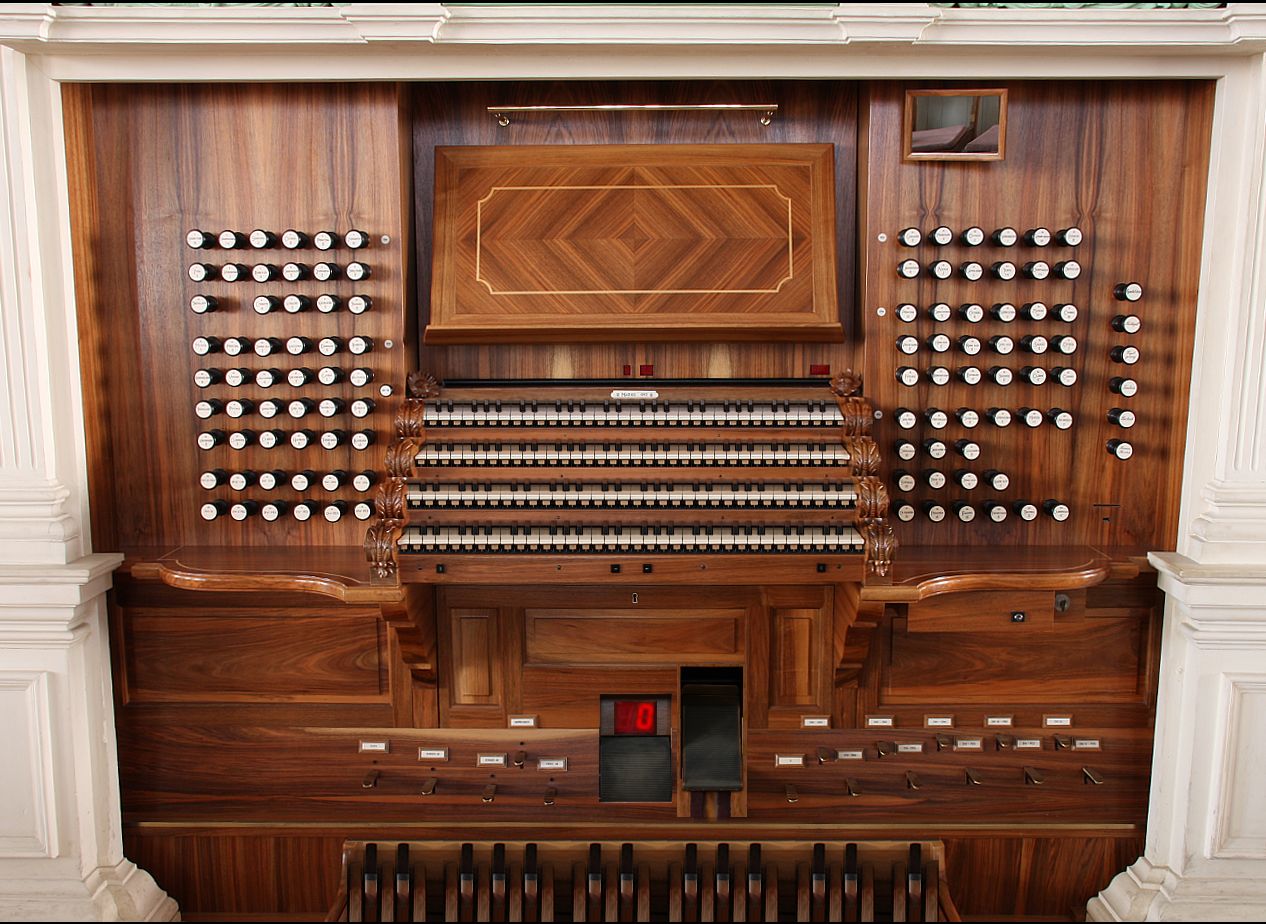

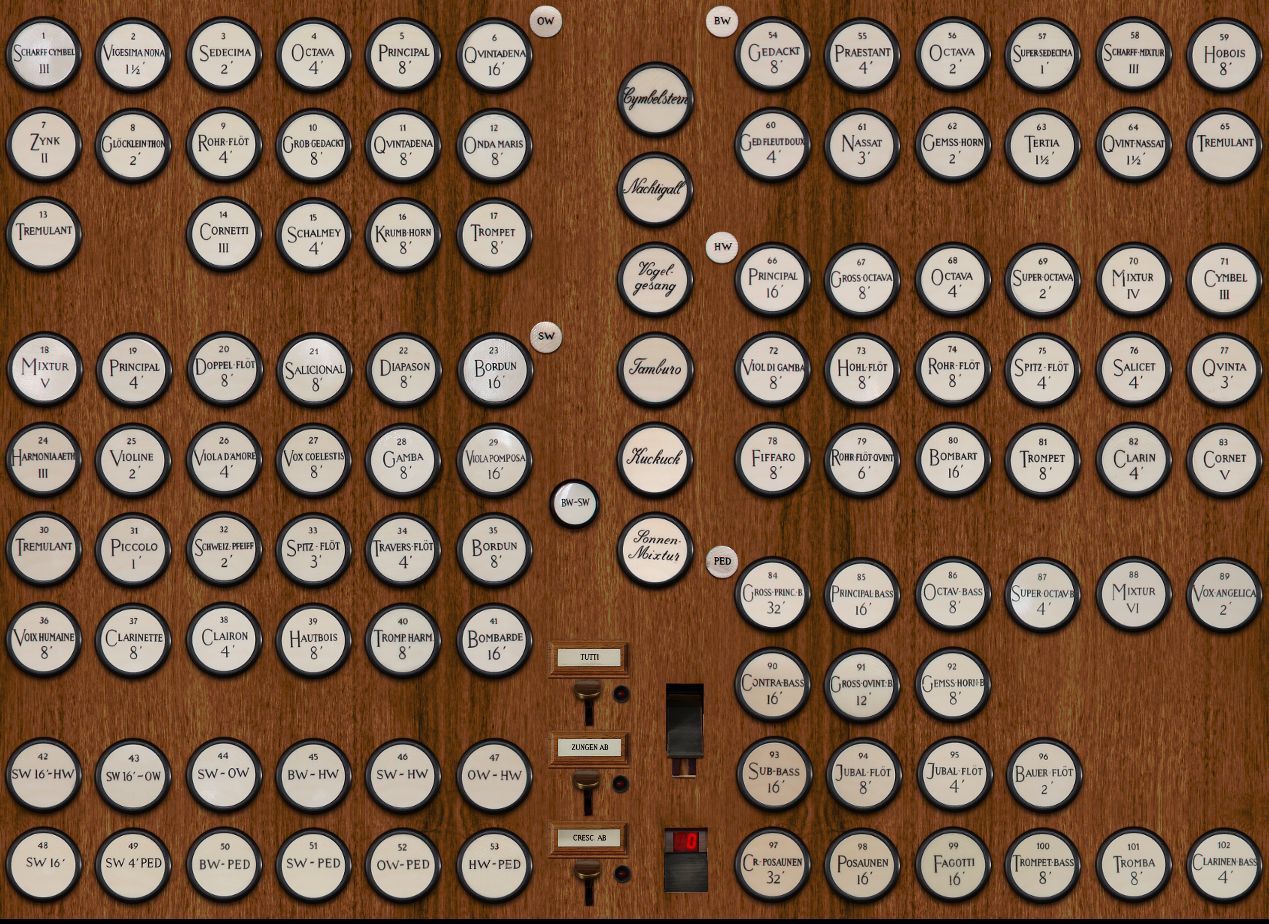
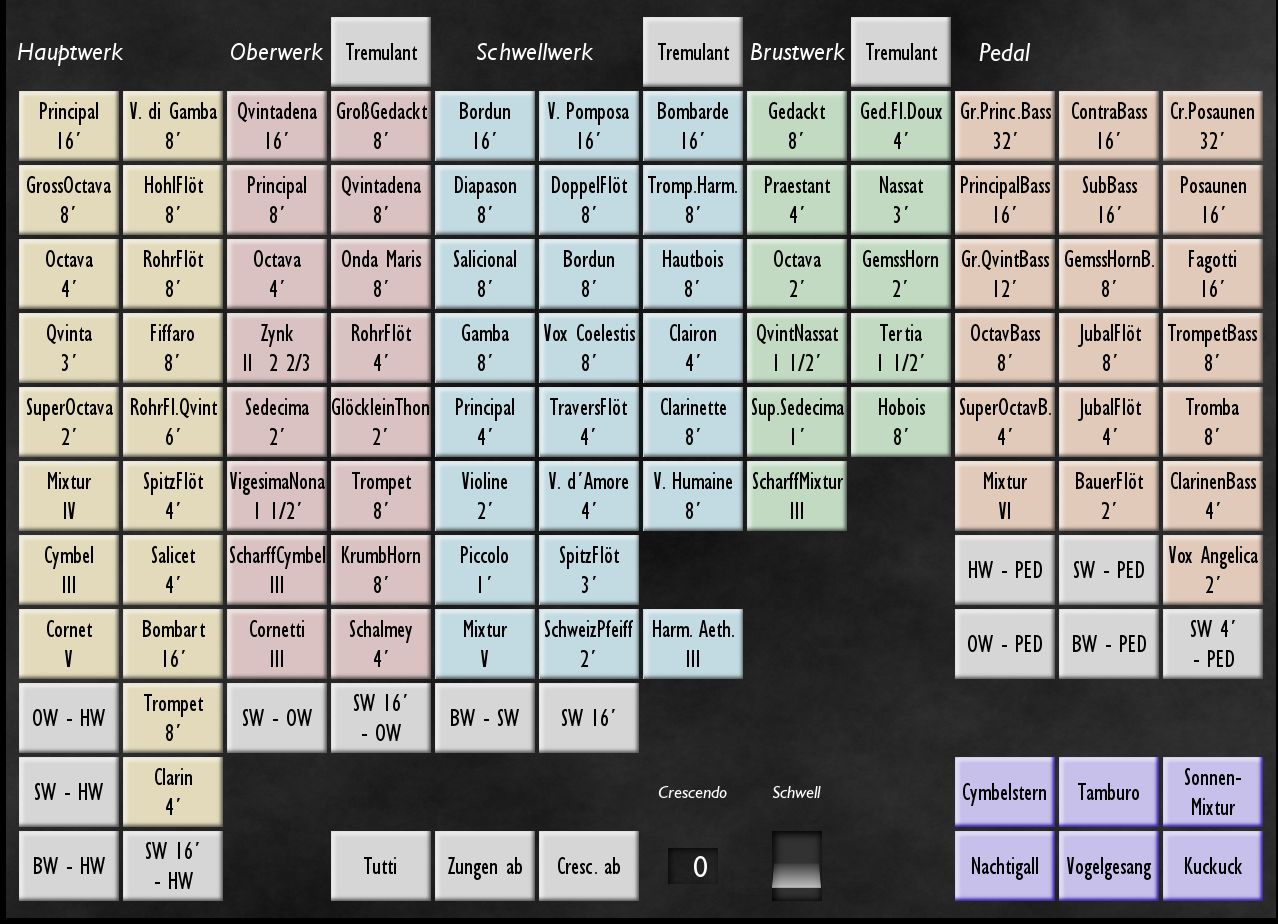
Requirements
All the editions require Hauptwerk software, version 5 or above! The medium and the full editions are encrypted, dongle protected. The free and the small editions are not encrypted.
Requirements - Full variant
RAM consumption: 6-channel surround, default loading options, memory compression on.
• 16-bit: 40 GB
• 20-bit: 77 GB
• 24-bit: 85 GB
RAM consumption: 6-channel surround, the front-direct ranks loaded with truncated releases (simulated dry, long decay 250ms). The front-diffuse and the rear ranks loaded with normal full releases. This is the recommended option for computers with 64 GB of RAM or less.
• 16-bit: 33 GB
• 20-bit: 57 GB (recommended)
RAM consumption: 2-channel wet, the front-diffuse samples loaded, all other ranks disabled.
• 16-bit: 13.1 GB
• 20-bit: 23.5 GB
Screen resolution 1280x1024 px or more.
Polyphony of 9000 voices recommended for the full suround (3500 pipes minimum).
Polyphony of 4000 simultaneous pipes recommended for use of the wet sample set (2500 minimum).
The virtual organ requires about 100 GB of the HDD space.
Requirements - Medium variant
RAM consumption: 6-channel surround, default loading options, memory compression on.
• 16-bit: 28 GB
• 20-bit: 49 GB
RAM consumption: 6-channel surround, the front-direct ranks loaded with truncated releases (simulated dry, long decay 250ms). The front-diffuse and the rear ranks loaded with normal full releases. This is the recommended option for computers with 64 GB of RAM or less.
• 16-bit: 23 GB
• 20-bit: 39 GB (recommended)
Requirements - Small variant
RAM consumption: 6-channel surround, default loading options, memory compression on.
• 16-bit: 15.8 GB
• 20-bit: 28.2 GB
This Hauptwerk Sample Set is presented to you by Leonart Studio, an authorised reseller for the manufacturer Sonus Paradisi in Switzerland (shipping internationally). Enjoy this digitally sampled organ library for the use with Hauptwerk software and start expanding your historical organ collection today.
More Hauptwerk Sample Sets
-
Schwerin, Dom, Ladegast Organ 1871 [Hauptwerk]
Vendor:Sonus ParadisiRegular price CHF 616.00Regular priceUnit price / per -
Segovia, 1772 [Hauptwerk]
Vendor:Sonus ParadisiRegular price CHF 317.90Regular priceUnit price / per -
Groningen, 1450-1740 [Hauptwerk]
Vendor:Sonus ParadisiRegular price From CHF 658.90Regular priceUnit price / perCHF 1,681.90Sale price From CHF 658.90Sale -
St. Maximin, 1775 [Hauptwerk]
Vendor:Sonus ParadisiRegular price CHF 440.00Regular priceUnit price / per -
Reuter, 1928 [Hauptwerk]
Vendor:Sonus ParadisiRegular price CHF 473.00Regular priceUnit price / per -
Casavant, 1995 [Hauptwerk]
Vendor:Sonus ParadisiRegular price CHF 174.90Regular priceUnit price / per -
Rotterdam Hoofdorgel, 1973 [Hauptwerk]
Vendor:Sonus ParadisiRegular price From CHF 330.00Regular priceUnit price / perCHF 958.10Sale price From CHF 330.00Sale -
Piacenza, 1838 [Hauptwerk]
Vendor:Sonus ParadisiRegular price CHF 330.00Regular priceUnit price / per -
Bückeburg, 1997 [Hauptwerk]
Vendor:Sonus ParadisiRegular price From CHF 1.10Regular priceUnit price / per -
Lüdingworth, 1683 [Hauptwerk]
Vendor:Sonus ParadisiRegular price CHF 330.00Regular priceUnit price / per

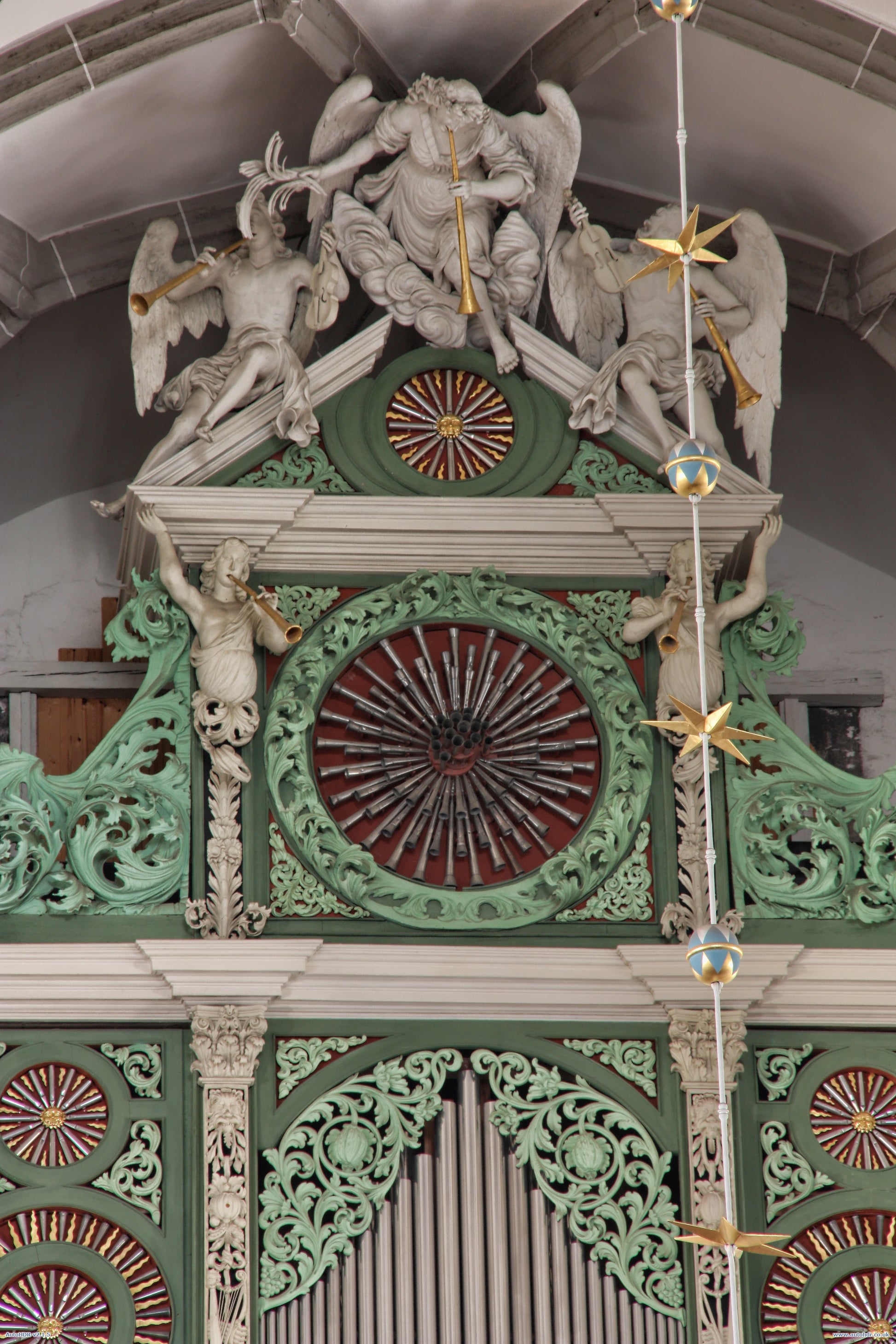

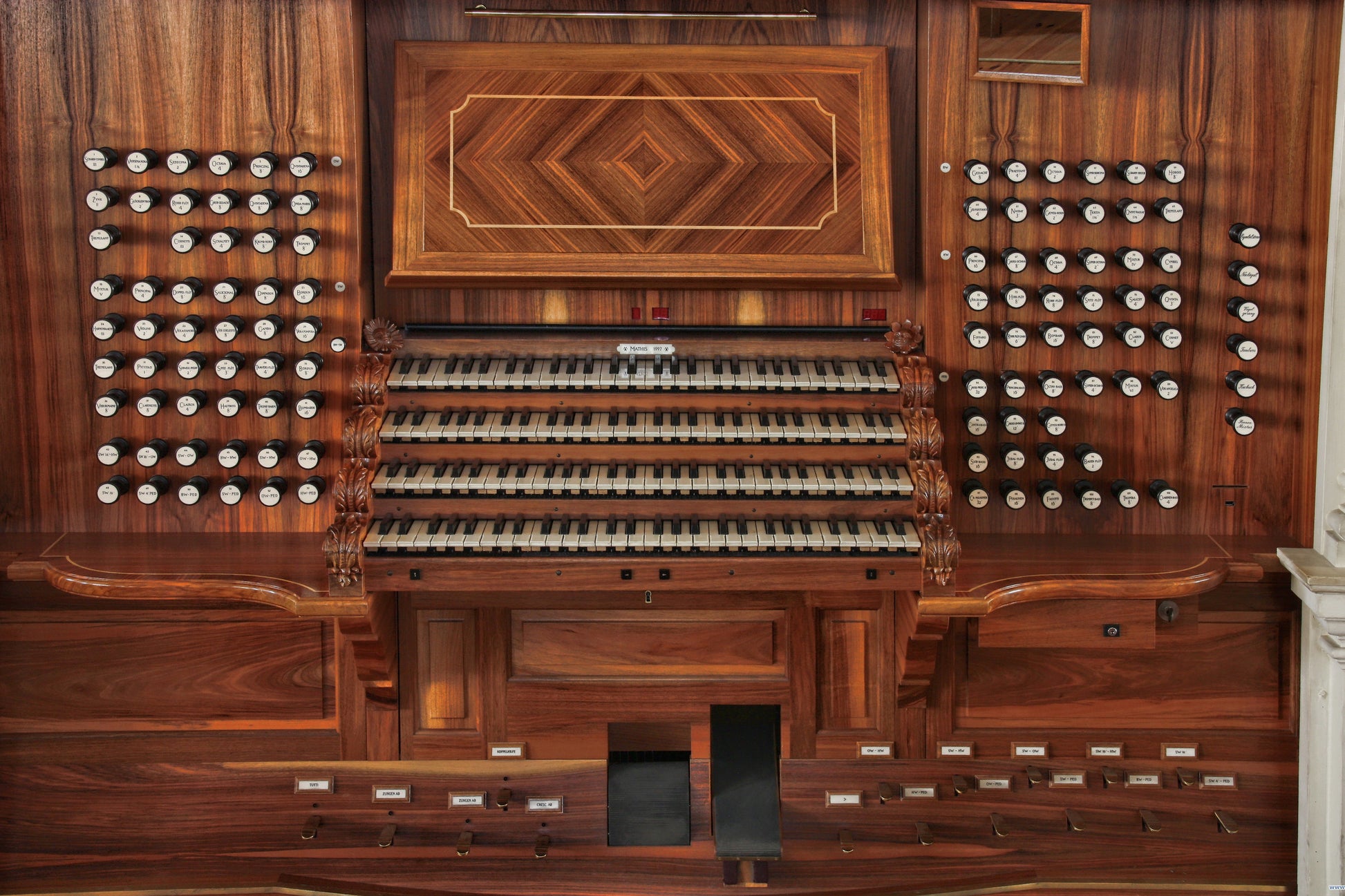
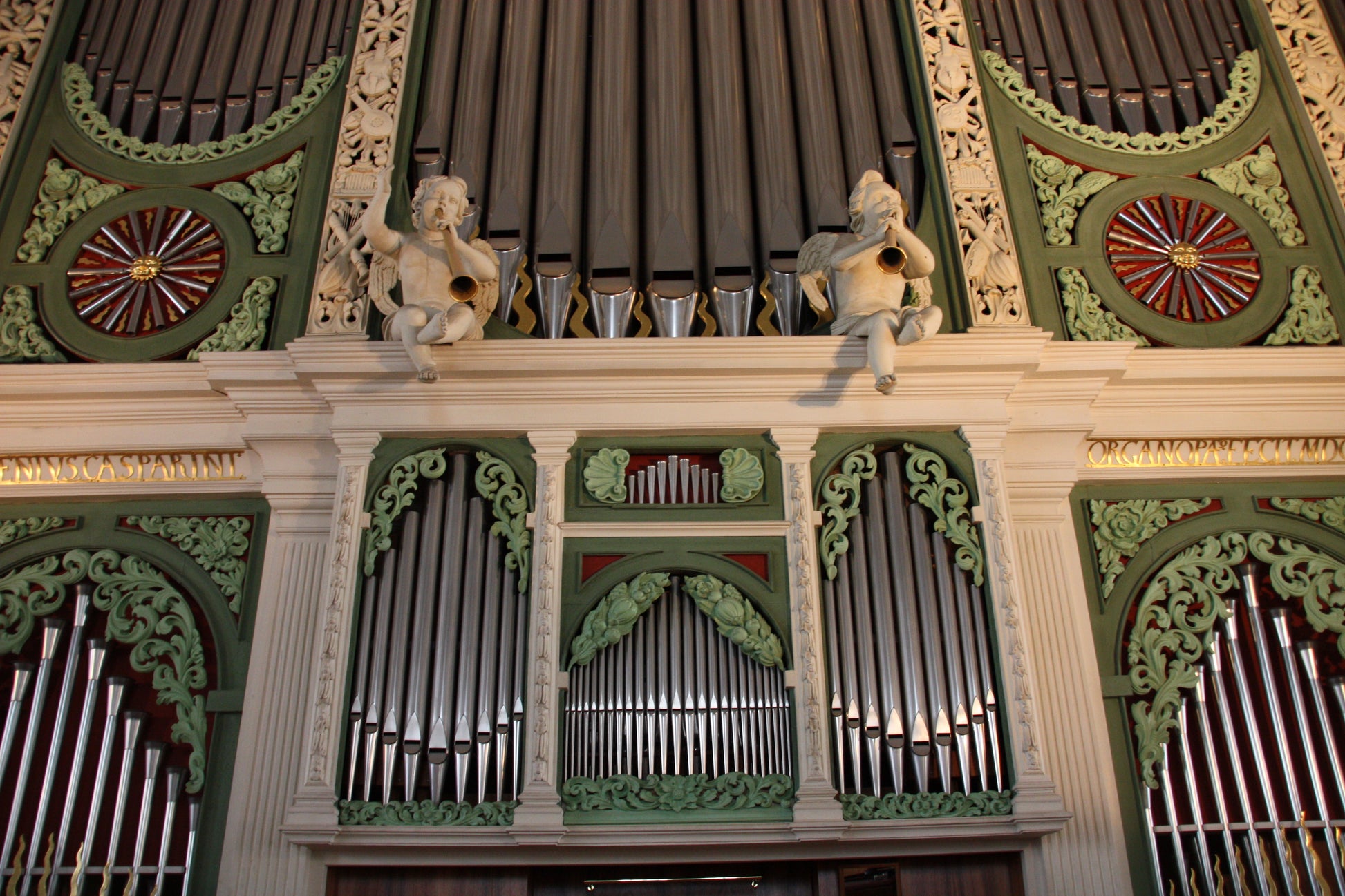



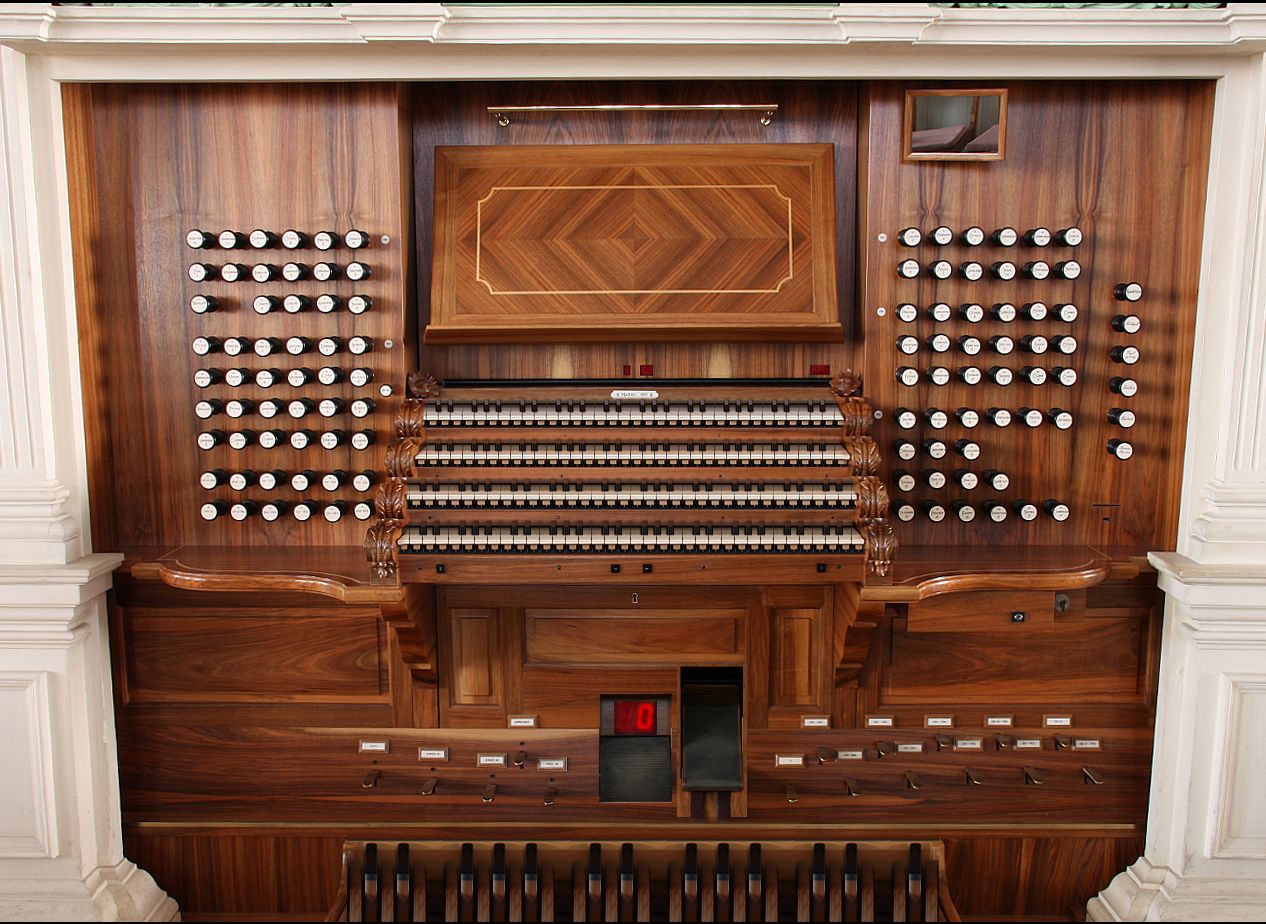
![Schwerin, Dom, Ladegast Organ 1871 [Hauptwerk]](http://artful.shop/cdn/shop/files/ladegast1.jpg?v=1759140126&width=533)
![Segovia, 1772 [Hauptwerk]](http://artful.shop/cdn/shop/files/ss_segovia1.jpg?v=1714213906&width=533)
![Groningen, 1450-1740 [Hauptwerk]](http://artful.shop/cdn/shop/files/ss_Groningen1.jpg?v=1693275425&width=533)
![St. Maximin, 1775 [Hauptwerk]](http://artful.shop/cdn/shop/files/ss_maximin1.jpg?v=1692902597&width=533)
![Reuter, 1928 [Hauptwerk]](http://artful.shop/cdn/shop/files/ss_Reuter1.jpg?v=1693321024&width=533)
![Casavant, 1995 [Hauptwerk]](http://artful.shop/cdn/shop/files/ss_casavant1.jpg?v=1693319885&width=533)
![Rotterdam Hoofdorgel, 1973 [Hauptwerk]](http://artful.shop/cdn/shop/files/ss_RotterdamMain1.jpg?v=1693279529&width=533)
![Piacenza, 1838 [Hauptwerk]](http://artful.shop/cdn/shop/files/ss_piacenza1.jpg?v=1693003521&width=533)
![Bückeburg, 1997 [Hauptwerk]](http://artful.shop/cdn/shop/files/ss_bueckeburg1.jpg?v=1692967628&width=533)
![Lüdingworth, 1683 [Hauptwerk]](http://artful.shop/cdn/shop/files/ss_luedingworth1.jpg?v=1692998051&width=533)